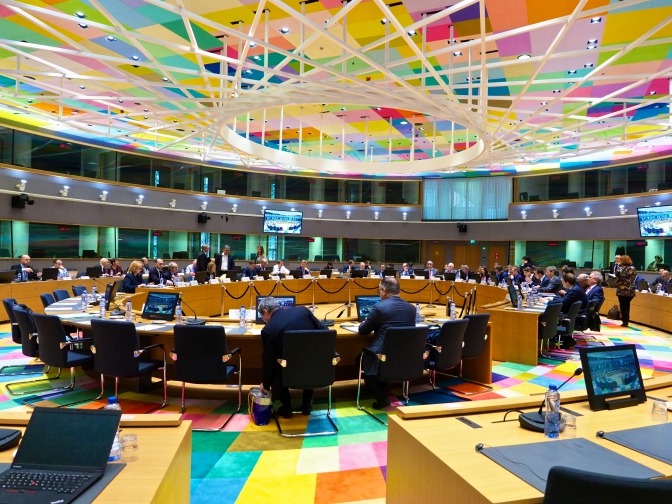A futuristic new building with a captivating facade has recently been added to Brussel’s architectural landscape. It is the Europa building, located within a stone’s throw from Schuman Square in the heart of the European quarter. Since last year, the building has become the home of the institutions representing the EU member states.
Named the Europa building because the name is easy to translate into all EU languages, the decision to build it was taken in 2004 when the EU was enlarged with 10 new member states, which necessitated additional meeting space. The same year, a decision was also taken that all European summits in principle should be held in Brussels. The actual construction of the building started in 2011.
The Europa building is tailor-made to host meetings of different sizes and offers meeting rooms for summits, minister council meetings, expert meetings and visits to Donald Tusk, the president of the European Council – in total about 6,000 meetings per year.
The biggest meeting room has space for around 330 participants and is used for summits with third countries or whole continents as for example the EU – Africa summit with about 90 delegations present.
The number of summits in Brussels has increased to 9-10 per year as a result of the burning political and economic issues – Brexit, migration, terrorism, and the financial crisis to name a few – facing the EU in recent years. The member state holding the rotating EU presidency may also arrange one summit.
What is so special with the Europa building from architectural and design viewpoints? The centre of the building consists of a lantern-shaped structure, – the only one of its kind in the world - which is adapted to the different sizes of the meeting rooms. The narrow base of the lantern is due to the Schuman railway tunnel below, which did not allow a broader structural support. 
Architect and engineer Philippe Samyn, responsible for the design of the building, says that he responded to the needs expressed by the Council. The iconic shape of the lantern was determined not solely by aesthetic considerations, but primarily by functional and structural constraints. But he adds that he sees a symbolic aspect in the shape he chose. For him, it also pictures the “heart” of the European project.
The lantern is surrounded by a square façade made of old oak window frames reclaimed from demolition sites in practically all member states, symbolizing the EU motto “United in Diversity”. The ceilings and floors of all meeting rooms are covered with multicoloured patterns that create a feeling of welcoming warmth and light. The same colours are also found in the corridors and lifts.
The only colour exception is in the listening rooms next to the meeting rooms where officials and advisers to the EU leaders can “shadow” the meetings, since they are not always allowed to attend them. These rooms are painted boring grey.
The building was constructed with the environment in mind. Solar panels cover the entire roof of the building and this together with the panels installed in the Justus Lipsius building makes it one of the first producers of solar energy in the Brussels region. A system of rainwater collection and storage caters for the sanitary facilities in the building.
The new building is connected with part of Residence Palace, a luxury Art Deco apartment building from the 1920s, which was used by the Nazi German occupation force in WWII and later by the Belgian government. It is also linked to the Justus Lipsius building, which still houses the main press centre, by two footbridges and the two buildings actually operate together as a single area.
It is not easy to enter the building for security reasons and in fact the security perimeter when summits take place is doubled. A visitor has to pass the security control in the Julius Lipsius building, but EU leaders can arrive directly to the Europa building by car.
It was expensive to construct the Europa building – the final budget totalled €321 million in 2016 prices – but with all meetings taking place there and the decisions taken for the good of Europe – it should pay off in the long run. According to the press officer, a summit in Brussels can be organised within three days for less cost than a summit in a member state.
The building will open its doors to the public at the next annual EU Open Day, which will take place in May 2018.
Council meetings and summits The Council of the European Union, the main decision-making body besides the European parliament, is where ministers from the member states meet to discuss and adopt new laws. The European Council is where EU leaders, heads of state and government hold summit meetings to set the broad direction of EU policy. How transparent are the summits and other meetings? Summits are closed meetings with no protocols published but conclusions are issued following the summits, in addition to statements at the press conferences and so-called “doorstep statements” by arriving and departing leaders. More open are the ministerial meetings, when legislation is on the agenda. These can be followed on video. Speaking times at the summits are not limited and do not follow a specific order, which explains why the summits sometimes last until the middle of the night or early morning. At the ministerial meetings, every member state is supposed to express its opinion in no more than three minutes. |
By Mose Apelblat

